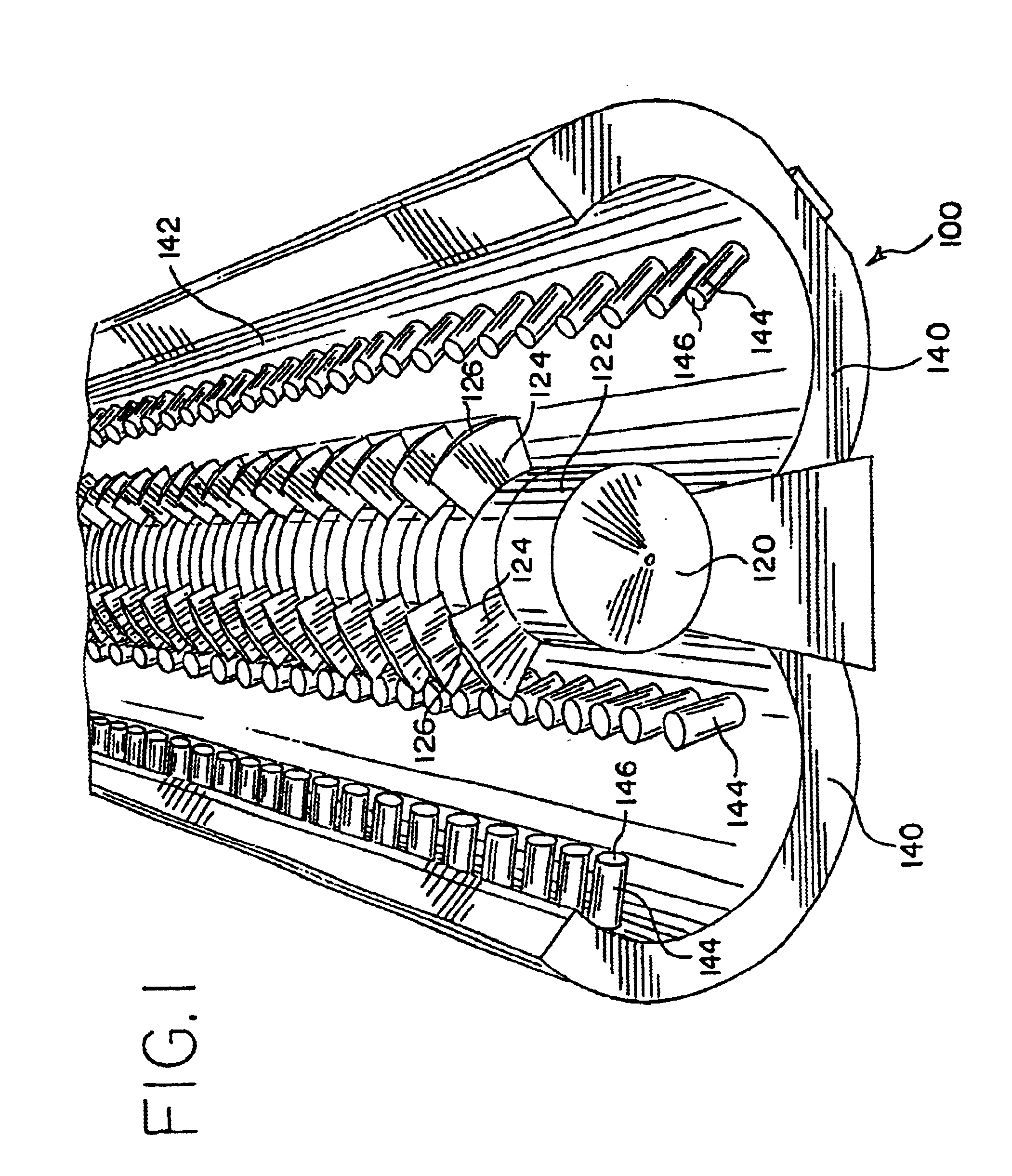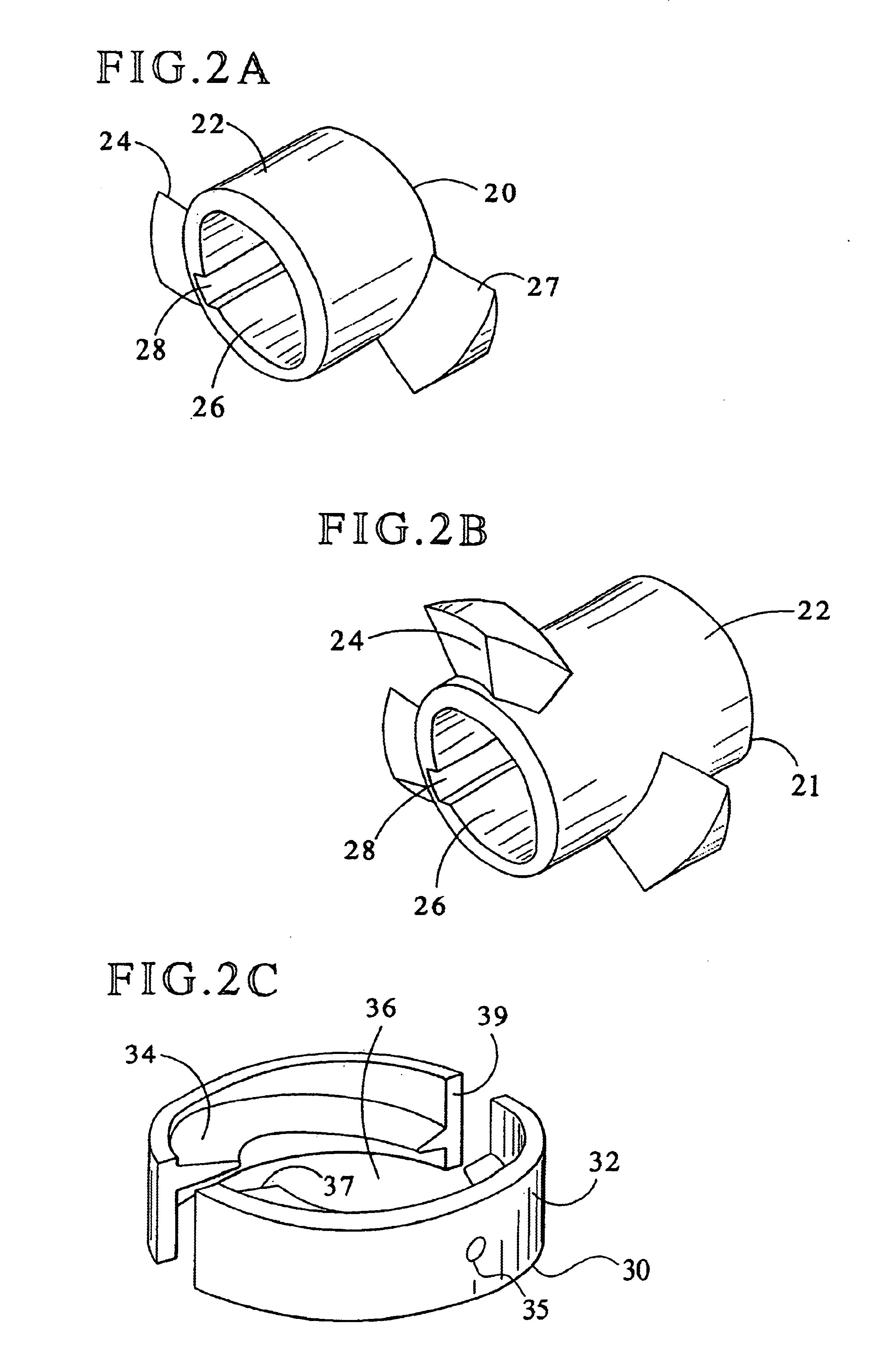Chewing gum manufacture using high efficiency continuous mixer
- Summary
- Abstract
- Description
- Claims
- Application Information
AI Technical Summary
Benefits of technology
Problems solved by technology
Method used
Image
Examples
example 1
Testing the Suitability Of a Continuous Mixer
The following preliminary test can be employed to determine whether a particular continuous mixer with a particular configuration meets the requirements of a high efficiency mixer suitable for practicing the method of the invention.
A dry blend of 35.7% butyl rubber (98.5% isobutylene—1.5% isoprene copolymer, with a molecular weight of 120,000-150,000, manufactured by Polysar, Ltd. of Sarnia, Ontario, Canada as POLYSAR Butyl101-3); 35.7% calcium carbonate (VICRON 15—15 from Pfizer, Inc., New York, N.Y.); 14.3% polyterpene resin (ZONAREZ 90 from Arizona Chemical Company of Panama City, Fla.) and 14.3% of a second polyterpene resin (ZONAREZ 7125 from Arizona Chemical Company) is fed into the continuous mixer in question equipped with the mixer configuration to be tested. The temperature profile is optimized for the best mixing, subject to the restriction that the exit temperature of the mixture does not exceed 170° C. (and preferably remains...
examples 2-11
Continuous Chewing Gum Manufacture
The following examples were run using a Buss kneader with a 100 mm mixer screw diameter, configured in the preferred manner described above (unless indicated otherwise), with five mixing zones, a total mixing L / D of 19, and an initial conveying L / D of 1⅓. No die was used at the end of the mixer, unless indicated otherwise, and the product mixture exited as a continuous rope. Each example was designed with feed rates to yield chewing gum product at the rate of 300 pounds per hour.
Liquid ingredients were fed using volumetric pumps into the large feed ports and / or smaller liquid injection ports generally positioned as described above, unless otherwise indicated. The pumps were appropriately sized and adjusted to achieve the desired feed rates.
Dry ingredients were added using gravimetric screw feeders into the large addition ports positioned as described above. Again, the feeders were appropriately sized and adjusted to achieve the desired feed rates.
Te...
example 2
This example illustrates the preparation of a spearmint flavored non-tack sugar chewing gum. A mixture of 24.2% terpene resin, 29.7% dusted ground butyl rubber (75% rubber with 25% fine ground calcium carbonate as an anti-blocking aid) and 46.1% fine ground calcium carbonate was fed at 25 lb / hr into the first large feed port (port 212 in FIGS. 7 and 8). Low molecular weight polyisobutylene (mol. wt.=12,000), preheated to 100° C., was also added at 6.3 lb / hr into this port.
Ground low molecular weight polyvinyl acetate was added at 13.3 lb / hr into the second large feed port (port 232 in FIGS. 7 and 8).
A fat mixture, preheated to 83° C., was injected into the liquid injection ports in the third mixing zone (ports 241 and 243 in FIG. 7), at a total rate of 18.4 lb / hr, with 50% of the mixture being fed through each port. The fat mixture included 30.4% hydrogenated soybean oil, 35.4% hydrogenated cottonseed oil, 13.6% partially hydrogenated soybean oil, 18.6% glycerol monostearate, 1.7% c...
PUM
 Login to View More
Login to View More Abstract
Description
Claims
Application Information
 Login to View More
Login to View More - R&D
- Intellectual Property
- Life Sciences
- Materials
- Tech Scout
- Unparalleled Data Quality
- Higher Quality Content
- 60% Fewer Hallucinations
Browse by: Latest US Patents, China's latest patents, Technical Efficacy Thesaurus, Application Domain, Technology Topic, Popular Technical Reports.
© 2025 PatSnap. All rights reserved.Legal|Privacy policy|Modern Slavery Act Transparency Statement|Sitemap|About US| Contact US: help@patsnap.com



